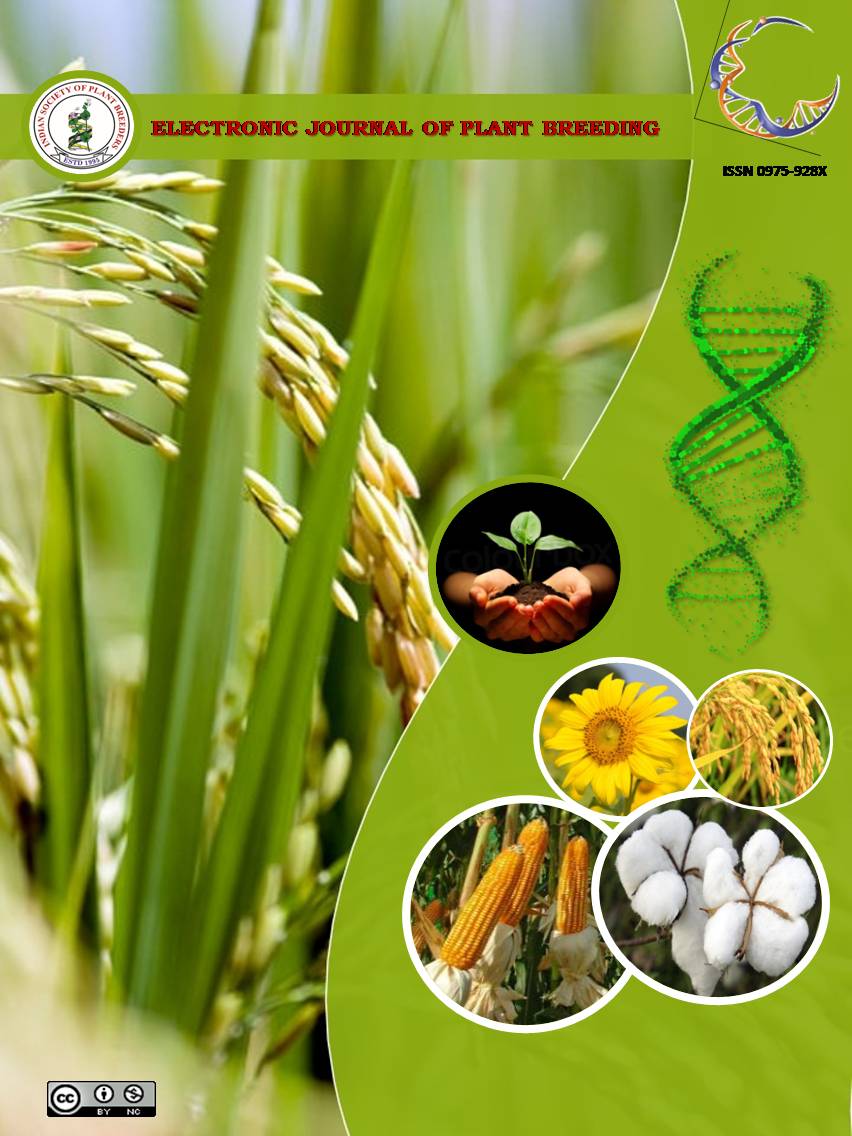Combining ability analysis in sesame (Sesamum indicum L.)
Abstract
An attempt was made to study the general and specific combining ability in sesame (Sesamum indicum L.) through line x tester analysis by using five lines and ten testers. A total of fifty crosses were developed and eleven quantitative traits were studied. Among the line AT-231 was the best general combiner for days to 50 % flowering, days to maturity, number of capsule per plant, number of seed per capsule, 1000 seed weight, oil content and seed yield per plant and the line RT-54 for days to maturity, width of capsule, 1000 seed weight and seed yield per plant and oil content. Among the tester KMR-69 showed positive gca effects for seed yield per plant and 1000 seed weight. The tester GT-3 was the best general combiner for days to 50 % flowering, oil content, length of capsule and width of capsule. The tester LOCAL was the best general combiner for number of capsule per plant, number of seed per capsule and 1000 seed weight. The tester PRACHI was the best general combiner for number of branches per plant. The cross RT-54 x KMR-69 exhibited significantly high sca effects for the characters viz., number of capsule per plant, width of capsule, 1000 seed weight and seed yield per plant and hence these crosses could be utilized for yield improvement through heterosis and pedigree breeding.

It is certified that:
- The corresponding author is fully responsible for any disputes arising due to the publication of his/her manuscript.
- The article has been seen by all the authors who are satisfied with its form and content.
- The sequence of names of authors in the by-line is as per their relative contribution to this experiment, giving due credit to all scientists who made notable contribution to it.
- All the authors fully understand that inclusion of any other co-authors or exclusion of any co-authors is not possible once the article has been submitted to the journal.
- The corresponding author takes full responsibility for this article.
- The address of the organization where the research was conducted is given.
- The article is exclusive for this journal, and the results reported here have not been sent (and will not be sent during its consideration by this journal) for publication in any other journal.
- Authors agree to abide by the objective comments of referees and do agree to modify the article into a short note as per the recommendation, for publication in the Electronic Journal of Plant Breeding.
- If published in Electronic Journal of Plant Breeding, the copyright of this article would vest with the Indian Society of Plant Breeders, who will have the right to enter into any agreement with any organization in India or abroad engaged in reprography, photocopying, storage and dissemination of information contained in it, and neither we nor our legal heirs will have any claims on royalty.


